Medical expert of the article
New publications
Treatment of red spots on legs
Last reviewed: 06.07.2025

All iLive content is medically reviewed or fact checked to ensure as much factual accuracy as possible.
We have strict sourcing guidelines and only link to reputable media sites, academic research institutions and, whenever possible, medically peer reviewed studies. Note that the numbers in parentheses ([1], [2], etc.) are clickable links to these studies.
If you feel that any of our content is inaccurate, out-of-date, or otherwise questionable, please select it and press Ctrl + Enter.
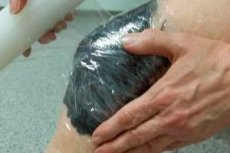
Appropriate and effective therapy can only be prescribed after a comprehensive examination.
- Treatment is individual for each patient. The patient's age, causes and severity of the pathology are taken into account. Reactions to local medications and systemic agents are also taken into account.
- Treatment should be targeted and comprehensive. It is important to use all areas of therapy: diet, medications, physiotherapy, spa treatment, etc.
Since most skin rashes are not only a local isolated process, attention is paid to both external therapy and general treatment. When choosing a drug, its possible therapeutic effect and side effects should be taken into account.
Medicines
The choice of medicine for red spots on the legs depends entirely on the factors that provoked them. Let's consider the main methods of treating skin changes using allergic reactions as an example, since they are the ones that most often cause unpleasant symptoms:
- Antihistamines – used to prevent the release of histamine and the formation of rashes. This group of drugs consists of several generations.
- First generation – have a rapid therapeutic effect and eliminate severe manifestations of allergies. Cause many undesirable side effects (drowsiness, addiction, lethargy, headaches). This category includes: Pipolfen, Tavegil, Dimedrol, Fenistil, Diazolin, Suprastin.
- Second generation drugs have fewer side effects and have a prolonged effect. These include: Claritin, Acrivastine, Erius, Ebastine, Terfenadine, Semprex.
- The latest generation of antihistamines – do not cause drowsiness, do not affect cardiovascular activity, can be used for several months. This group includes: Cetrin, Telfast, Claramax, Trexil, Levocabastine, Eslotin, Fexofenadine, Dimetendene, Xizal.
- Mast cell membrane stabilizers – reduce the excitability of cells that cause skin allergic reactions. Such drugs control the release of histamine from mast cells. The effect of such drugs develops gradually, so they are often used in combination with other medications. The main drugs of this pharmacotherapeutic group are: Intal, Cromolyn, Ketotifen, Nedocromil sodium.
- Immunomodulators – are prescribed for frequent and long-term manifestations of allergy. They help prevent severe complications of the disease. Effective immunostimulants include: Timolin, Immunofan, Viferon, Derinat.
- Corticosteroids are drugs containing hormones of the adrenal cortex (glucocorticoids and mineralocorticoids). This group includes: Celestone, Kenalog, Medrol, Urbazon, Laticort.
Let's take a closer look at the drugs that are most often prescribed to eliminate dermatological problems of allergic origin:
- Suprastin
A drug from the antihistamine group. It is used for various allergic pathologies: dermatoses, rhinitis, conjunctivitis, Quincke's edema and others. Tablets are taken orally 2-3 times a day. In particularly severe cases, intramuscular or intravenous administration of the drug is possible.
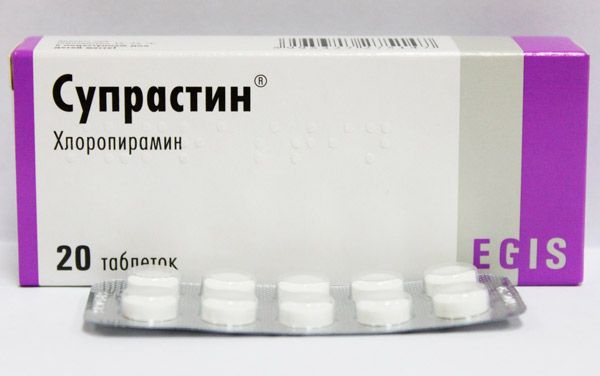
Side effects are manifested in the form of general weakness and drowsiness. Suprastin is not recommended for use in case of intolerance to its components, glaucoma and hypertrophy of the prostate gland. With special caution, the drug is prescribed to patients whose activities require quick reactions.
- Claritin
An antihistamine with the active substance loratadine. It is used for skin allergic pathologies, seasonal rhinitis of allergic origin. It can be used to treat patients from two years of age. The drug is taken 1 tablet 1 time per day. The duration of therapy is determined by the attending physician.

- Side effects most often appear from the digestive system: nausea and vomiting, dry mouth. Anaphylactic reactions occur extremely rarely. Rapid fatigue, drowsiness, increased irritability, headaches are also possible.
- The drug is contraindicated for children under two years of age, in case of hypersensitivity to its components and during lactation.
- In case of overdose, the heart rate increases, drowsiness and headaches appear. Treatment includes gastric lavage with isotonic sodium chloride solution and intake of adsorbents.
- Cetrin
Contains the active substance cetirizine, which is a metabolite of hydroxyzine. Reduces the severity of allergic reactions, relieves smooth muscle spasms, reduces capillary permeability and reduces the migration of neutrophils, basophils and eosinophils.
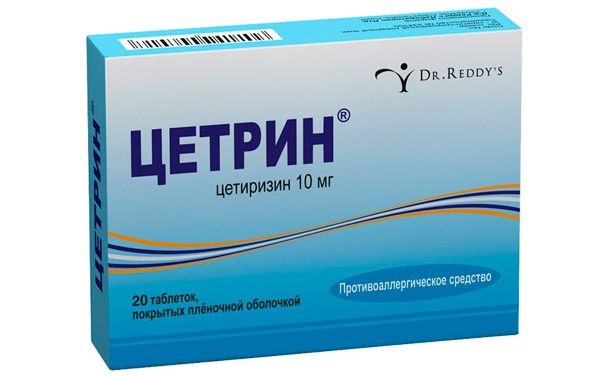
- Indications for use: complex therapy of allergic dermatoses and dermatitis, chronic frequently recurring urticaria, allergic conjunctivitis and rhinitis. The drug is taken orally with a small amount of water. For children over 12 years old and adults, 1 tablet per day is prescribed, for children over 6 years old, ½ tablet 2 times a day. The course of treatment is no more than 1 month.
- Side effects: dry mouth, stomatitis, liver dysfunction, dyspeptic symptoms. Dizziness, general weakness and drowsiness, tremor of the extremities, migraine.
- Contraindications: hypersensitivity to the components of the drug, patients under 6 years of age, pregnancy and lactation.
- Overdose is manifested by increased drowsiness, urinary retention and tachycardia. For treatment, gastric lavage is performed, enterosorbents and laxatives are taken.
- Ketotifen
Antiallergic agent with sedative properties. Inhibits the release of histamine and other mediators from mast cells. Used for dermatological rashes of allergic origin, hay fever, bronchial asthma, allergic bronchitis.

The drug is taken orally 1 tablet 2 times a day, if necessary, the dosage can be doubled. Side effects are mild dizziness and dry mouth. The drug is not prescribed for thrombocytopenia, during pregnancy and for drivers of transport in outpatient therapy.
- Derinat
Immunomodulator with the active substance - sodium deoxyribonucleate. Activates humoral and cellular immunity processes, stimulates tissue regeneration, normalizes reparative processes. Regulates the body's reactions to bacterial, fungal and viral infections. Improves the condition of organs and tissues in dystrophic conditions of vascular origin. Promotes healing of skin and mucous membrane damage without the formation of cicatricial changes.
- Indications for use: local therapy of inflammatory pathologies of various etiologies, including fungal, bacterial and viral diseases. Acute respiratory diseases of various etiologies, gynecological practice.
- Method of application: solution for external use is used for applications and irrigations. Side effects are manifested by a weak analgesic effect. The drug is contraindicated in case of intolerance to its components.
- Kenalog
Synthetic glucocorticosteroid for systemic use. Contains the active substance triamcinolone. Has anti-inflammatory, immunosuppressive and antiallergic properties.
- Indications for use: allergic skin disorders (dermatoses, urticaria, psoriasis, atomic and eczematoid dermatitis), chronic respiratory diseases, hay fever, oncological lesions of the blood and prostate gland. Tablets are taken in the first half of the day. The daily dosage is 4-42 mg, it can be divided into several doses.
- Side effects include gastrointestinal disorders, possible development of arterial hypertension, sleep disorders, headaches and dizziness, increased irritability, impaired coordination of movements, etc.
- Contraindications: intolerance to the components of the drug, pregnancy and lactation, patients under 6 years of age. Not prescribed for diabetes, glaucoma, tendency to bleeding and thrombus formation, after severe injuries and surgeries.
- Overdose: nausea, vomiting, sleep disorders, euphoria. Hemodialysis is ineffective, symptomatic therapy is indicated.
Only a doctor should select a medicine. He or she will determine the dosage and recommended duration of therapy.
Ointments for red spots on legs
To treat hyperemic rashes on the skin, topical agents are used. Let's consider effective ointments for red spots on the legs, which are caused by fungal diseases, lichen, insect bites or various allergic reactions:
- Exoderil
Antifungal agent for local use. Contains a synthetic active substance from the allylamine group - naftifine. Has fungicidal, bactericidal and fungistatic properties. Inhibits the biosynthesis of ergosterol in fungal cells, affects squalene epoxidase, but does not affect the cytochrome P450 system. Active against gram-positive and gram-negative microorganisms.
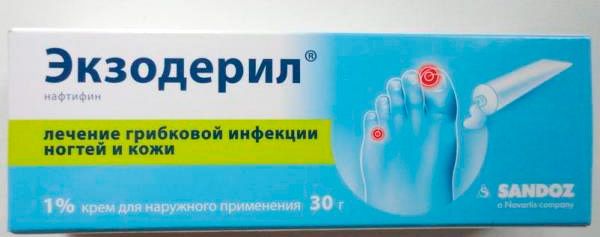
- Indications for use: fungal and candidal skin lesions, pityriasis versicolor and mycoses complicated by secondary bacterial infection. Trichophytosis and epidermophytosis of skin folds and feet.
- Directions for use: apply the preparation to clean, dry skin once a day. The course of treatment is 2 to 4 weeks. After using the ointment, wash your hands thoroughly.
- Side effects: local adverse reactions, dryness and redness of the skin, burning at the site of application of the drug. These symptoms pass on their own and do not require discontinuation of the drug.
- Contraindications: intolerance to the components of the ointment, application to damaged tissues. With special caution it is prescribed for the treatment of children and pregnant women.
- Overdose is possible only in case of accidental ingestion of the drug. Treatment includes gastric lavage and intake of enterosorbents with further symptomatic therapy.
Exoderil is available in the form of a solution for topical use in 10 ml bottles with a dropper cap and in the form of a 15 g cream.
- Triderm
Combined medicinal product. Contains clotrimazole, gentamicin and betamethasone dipropionate. Has antiallergic, antiexudative and anti-inflammatory effects. Has antipruritic, antifungal and antibacterial properties.

- Indications for use: various forms of bacterial and infected eczema. Inflammatory rashes with weeping and itchy spots.
- Directions for use: apply the cream to the affected areas, rubbing in lightly 2 times a day. Duration of treatment is 2-4 weeks.
- Side effects appear with prolonged use of the drug. Most often, patients experience the following symptoms: itching, burning, dryness and irritation of the skin, inflammation of the sebaceous glands and hair follicles at the site of application of the ointment, various allergic reactions.
- Contraindications: hypersensitivity to the components of the drug, chickenpox, syphilis or tuberculosis of the skin, reactions after vaccination.
Triderm is available in the form of a cream in tubes of 10 and 30 g.
- Lamisil
A broad-spectrum antifungal agent. Belongs to the pharmacotherapeutic group of allylamines. Can have both fungicidal and fungistatic effects (depending on dosage). The antifungal effect is based on reducing the concentration of ergosterol by suppressing the biosynthesis of stearins in the fungal membrane. The drug does not affect the concentration of other drugs, including hormonal ones.
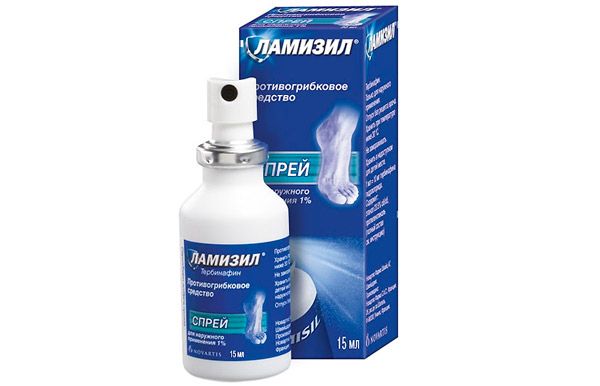
- Indications for use: mycoses, yeast infections of the epidermis, onychomycosis, versicolor lichen.
- Directions for use: apply the ointment to the affected area 1-2 times a day. Before applying the product, the skin should be cleaned and dried. Improvement of the painful condition is observed within 3-5 days, while the course of treatment lasts at least a month.
- Side effects: allergic reactions in the form of urticaria, itching, burning. To eliminate them, stop using the medication. Overdose with local use has not been recorded.
- Contraindications: hypersensitivity to the components of the drug, patients under 12 years of age, pregnant women.
Lamisil is available as Kerma 1% in 15 and 30 ml tubes and as a 30 ml spray with a nozzle.
- Fenistil
Antiallergic agent with antihistamine, antiserotonin and antibradykinin properties. Has a pronounced sedative effect, reduces increased capillary permeability.

- Indications for use: urticaria, food and drug allergies, allergic rhinitis. Elimination of itching from insect bites, atopic dermatitis and chickenpox.
- Method of application: the preparation is applied to the affected areas of the skin several times a day. The course of treatment is determined by the attending physician, individually for each patient.
- Side effects: dry and flaky skin, increased allergic reactions.
Available in the form of 0.1% drops 20 ml for oral administration and 0.1% gel in a 30 g tube for external use.
- Fucidin
A medicinal product with narrow-spectrum antibacterial properties. Contains the active component – fusidic acid. Has a bacteriostatic effect and also exhibits phagocytic activity. Reduces the production of microbiological endotoxins.

- Indications for use: treatment of conditions associated with staphylococci, gonococci, clostridia, diphtheria pathogens, meningococci. The drug is effective in case of infection of wound surfaces.
- Directions for use: apply the ointment to the affected area of the bacterial infection 3 times a day. The course of treatment is 10 days.
- Side effects: erythematous, pustular, maculopapular rash. No cases of overdose have been reported.
- Contraindications: individual sensitivity to the active components of the drug.
Fucidin is available in the following forms: cream and ointment 2% 15 g, tablets and suspension for oral administration, powder in vials with a buffer solution.
- Zovirax
A virostatic drug with the active component - acyclovir. Its mechanism of action is based on structural similarity with deoxyguanosine triphosphate. Due to this, competitive substitution of acyclovir occurs in the process of viral DNA synthesis. The active substance does not affect the functioning of healthy cells. It is active against the herpes simplex virus, which causes chickenpox. Moderately active against cytomegaloviruses.

- Indications for use: infectious diseases of the skin and mucous membranes caused by the herpes virus type I and II. Rashes with chickenpox and herpes zoster. Prevention of infectious pathologies in immunodeficiency. Prevention of cytomegalovirus infection.
- Directions for use: apply a small amount of ointment to the affected areas 3-5 times a day. The course of treatment is 3-5 days, but can be extended to 10 days if necessary.
- Side effects: itching, burning and irritation at the site of application. It is also possible to develop contact dermatitis, increased dryness and peeling. In case of overdose, more pronounced side effects occur.
- Contraindications: hypersensitivity to the components of the drug, dehydration and impaired renal function. With special caution it is prescribed for patients with neurological disorders.
The drug is available in several forms: tablets and powder for the preparation of a solution for oral use, cream for topical use and eye ointment.
- Panthenol
A medicinal product with the active ingredient dexpanthenol (analogue of pantothenic acid). Refers to water-soluble vitamins and is part of coenzyme A. Participates in intracellular metabolic processes. Accelerates the regeneration of damaged tissues and mucous membranes.
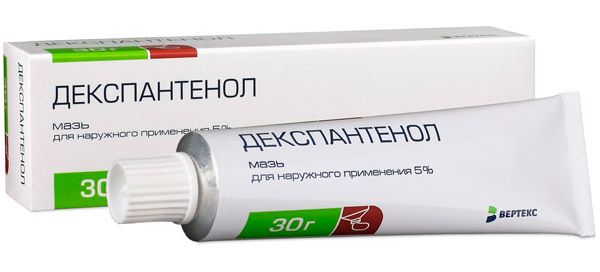
- Indications for use: accelerates the healing of any damage to the skin and mucous membranes. The drug is used for thermal and sunburn, vesicular dermatitis, skin grafts, abrasions, cuts.
- Directions for use: Apply the product to the skin several times a day. The duration of use depends entirely on the severity of the painful symptoms.
- Side effects: allergic reactions of varying severity may develop. No cases of overdose have been recorded, even if the drug is accidentally swallowed.
- Contraindications: individual intolerance to the components of the drug. The use of Panthenol during pregnancy is permitted.
Available in the form of an aerosol spray in cans.
All medications are used only as prescribed by a doctor. Self-medication can provoke the progression of painful symptoms and worsen skin rashes.
Vitamins
The skin is the largest and most complex organ. Vitamins for maintaining its beauty and health are difficult to single out in a separate group. This is due to the fact that in different areas and at different depths, the dermis has different structures and properties.
Let's look at the main complex of vitamins, the deficiency of which can provoke vitamin deficiency and other diseases that manifest themselves in changes in the skin on the legs and other parts of the body:
- A - retinol is necessary for rapid regeneration and restoration of epithelial tissue. Regular use of this substance helps to eliminate pigment spots, which are especially noticeable in old age.
- Group B – improves metabolic processes in the body, accelerates the transport of nutrients to the skin and removes waste products of cells from it. Deficiency of this group of vitamins is manifested by frequent dermatitis, irritation, itching, peeling.
- D – protects the body from various dermatological diseases. Used in the treatment of psoriasis.
- C, E and P – have antioxidant properties, protect the body from free radicals and other harmful substances, slow down the aging process. With their deficiency, the epidermis becomes dry, wrinkled, often cracks.
- Vitamin H – takes part in the synthesis of fats and carbohydrates. Promotes the formation of collagen. Deficiency of this vitamin leads to increased dryness, frequent eczema, dermatitis and even ulcerative tissue lesions.
- PP – protects the body from such a dangerous disease as pellagra. The pathological condition is manifested by a triad of symptoms: dermatitis, diarrhea and dementia. Corrosive ulcers, cracks and inflammation form on the skin. Increased muscle weakness is also observed.
Vitamin therapy is carried out in combination with medications and other drugs. Very often, patients are prescribed intramuscular injections of vitamin B1 and B12.
Physiotherapy treatment
Physiotherapy is indicated to accelerate skin regeneration, improve local immunity, reduce itching and flaking. It helps correct the endocrine and immune systems, stop inflammatory processes, and reduce the permeability of vascular walls.
Physiotherapy alleviates the patient's condition, stimulates reparation processes, has a tonic effect and increases the production of endogenous collagen. To reduce inflammatory reactions, remove inflammation mediators, reduce irritation of skin receptors and improve local blood supply, the following methods are used:
- Darsonvalization
- Paraffin applications
- Cryotherapy
- Galvanization
- Ultratontherapy
- Magnetic therapy
- Electrophoresis with drugs (antihistamines)
- Ultraviolet irradiation of the affected area
- Hypobaric hypoxytherapy
- Laser therapy
Physiotherapy with baths has pronounced healing properties. Foamy water procedures normalize the patient's psycho-emotional state, relieve itching, burning and peeling, and soften the skin.
- Radon baths – have sedative and analgesic properties. Stimulate tissue regeneration processes, improve trophism and adrenal function.
- Tar baths help to activate blood microcirculation in the affected areas.
- Sulfide baths have an analgesic and anti-inflammatory effect.
- Alkaline baths – soften the skin, eliminate dryness. Most often prescribed for psoriasis.
Despite all the beneficial properties, physiotherapy has a number of contraindications:
- Neoplasms in the area of impact
- Acute course of diseases
- The patient's condition is serious
- Feverish condition
- Cutaneous porphyria
- Mental disorders
- Systemic lupus erythematosus
- Bullous dermatoses
The choice of physiotherapy treatment method depends on many factors. In most cases, patients are prescribed several procedures, both local and general impact on the body.
Folk remedies
Not only classical medical methods are used to treat skin diseases, but also more unconventional methods. Folk treatment is one of the latter. Let's consider effective folk recipes for eliminating red spots on the legs and other parts of the body caused by various reasons:
- If the rash is caused by lichen or eczema, lemons are used for treatment. On the first day, you need to drink the juice of five lemons (divide into several doses), on the second day - from ten, on the third - from fifteen, and so on up to 25. Then do the procedure in reverse order until you reach five citrus fruits per day.
- A garlic compress is suitable for eliminating rashes caused by psoriasis, lichen or fungus. Boil a couple of heads of garlic until done and grind them until smooth with an equal amount of honey. Spread the product on a bandage and apply to the skin, carefully securing it with wax paper and a bandage. In the morning, the body should be washed with a light soap solution and the procedure repeated again. The treatment lasts until the skin is completely restored.
- For eczema, take nutmeg, ginger and galangal. Place all ingredients in a bottle, fill with alcohol and leave to infuse in a dark, warm place for 2-3 days. The finished tincture should be used to wipe the skin.
- To eliminate red dry lichen, you need to treat the rash with hot water 2-3 times a day for 3-5 minutes. After three days, there should be a noticeable improvement, and after 14 days the disease will completely disappear.
- If the appearance of spots on the skin is associated with vitamin deficiency, then viburnum tincture will help to increase immunity. Take 300 g of viburnum berries and pour 500 ml of boiling water over them. The remedy should be infused for 7-10 hours. Take the infusion ¼ cup 2-3 times a day.
Before using the above recipes, you should consult your doctor.
Herbal treatment
Another alternative medicine option is herbal treatment. The following recipes are most effective for dermatological problems:
- In case of a pronounced inflammatory process, an infusion of oak bark is suitable. Pour a glass of boiling water over a couple of spoons of dry raw material and let it brew until it cools. Strain and use for lotions on the affected areas.
- To speed up the healing of weeping rashes and red rashes with crusts, St. John's wort oil is recommended. Pour a glass of vegetable oil over a tablespoon of washed and dried St. John's wort flowers. The product should be infused for 14 days, shaking it periodically. The oil is used for compresses and treating wounds.
- Viburnum juice is excellent for combating lichen, eczema and rashes caused by hormonal imbalances. Grind 100 g of viburnum fruits thoroughly and pour boiling water over them (1 spoon of the plant per glass of water). The remedy should be infused for 4-6 hours, after which it can be drunk ½ glass 3-4 times a day.
- To treat eczema, psoriasis, ulcerative lupus and other skin diseases, use sea buckthorn oil or ointment. The product can be purchased at a pharmacy. The medicine quickly resolves infiltrates, reduces pain, burning and swelling. Eliminates peeling and accelerates tissue regeneration.
- Infusion of blueberry leaves has antiseptic, anti-inflammatory and astringent properties. Pour 10 g of raw material with a glass of boiling water and strain after 30-40 minutes. Use for external treatment of rashes.
The above herbal recipes may cause an allergic reaction, so you should consult a dermatologist before using them.
Homeopathy
A rather controversial alternative method of treating dermatological and many other diseases is homeopathy. For red spots on the legs, patients are most often prescribed the following drugs:
- Sulfuris, Arsenicum album – the rash is symmetrical, accompanied by intense itching.
- Causticum – skin changes are hot and pulsating, body temperature is elevated.
- Silicea, Petroleum, Natrium carbonicum – eczematous rashes, rashes caused by stress and emotional experiences.
- Sulfur iod, Hepar sulfuris – accelerate the processes of regeneration and restoration of the skin.
Any medications, including homeopathic ones, can only be used as prescribed by a doctor with an individual selection of dosage and duration of therapy.
Surgical treatment
Surgical intervention for red spots on the legs is extremely rare. Surgical treatment is possible in the following cases:
- If the rashes appear very often and are associated with acute allergic reactions, then gravitational surgery (extracorporeal hemocorrection) may be prescribed for treatment. This method is aimed at correcting the blood composition. Factors that provoke pathological reactions are removed from the patient's blood. After the procedure, the blood is saturated with useful substances, and if necessary, with medicinal components. After the first procedure, the rashes and other symptoms disappear. To obtain a lasting result, 5-10 procedures are required.
- Surgical treatment is necessary for varicose veins. To restore normal blood circulation, both traditional methods with skin incision along the varicose vein and minimally invasive methods are used. Most often, patients are prescribed: stripping, laser coagulation, microphlebectomy or phlebectomy. After the operation, the patient's condition normalizes, pathological symptoms disappear.
- Surgery is indicated for malignant neoplasms on the extremities. Radiation therapy in combination with chemotherapy may be prescribed to destroy cancer cells.
- If the changes on the legs turn out to be hemangiomas, then excision, laser destruction, removal with liquid nitrogen, electrocoagulation and other surgical methods are used to remove them.
- Surgical treatment is also possible for lichen planus, when the rash grows to the state of plaques with a pronounced cosmetic defect. Minimally invasive bloodless methods are used to remove them: radio wave or laser removal, cryodestruction.
The decision on the need for surgical treatment is made by the doctor, assessing all the risks of the chosen operation, possible complications and the therapeutic effect.


 [
[